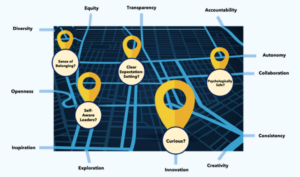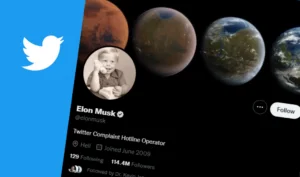
Frontline Employees Need Better Worktech. Is This The Answer?
Most of us assume that modern organizations are thriving, with digital technology connecting everyone and driving new levels of workforce productivity. It’s easy to believe,

Most of us assume that modern organizations are thriving, with digital technology connecting everyone and driving new levels of workforce productivity. It’s easy to believe,

These days, artificial intelligence is everywhere we turn. But it’s no longer just a cool buzzword. It’s real. For proof, look at recent posts on

We’ve all seen the headlines. Dystopian predictions about the long-term economic impact of artificial intelligence (AI) continue to dominate the news. But what do people

Artificial intelligence (AI) is transforming organizations at a breathtaking pace. But even positive change can trigger push-back from detractors. When left unchecked, AI resistance can

Among the many trends that are rapidly redefining work, perhaps the most consequential for HR is the arrival of artificial intelligence (AI). But this points

Modern organizations depend on people to work effectively within teams. Arguably, teamwork is even more important now, as businesses navigate diverse challenges, from constant technology

These are exciting times for anyone involved in employee learning. As generative AI becomes mainstream, the learning content authoring possibilities seem endless. However, cool content

If you subscribe to our twice-monthly TalentCulture newsletter, or you follow us on social media, you probably know we often publish original articles by business

The push/pull challenge of change management is never easy to embrace. After all, resisting disruption is human nature. But the process of unlearning and relearning

Let’s go back in time. Way back to 1997. Apple’s high-flying identity as a tech innovator had been seriously tarnished. It certainly wasn’t the global

Sponsored by The Culture Platform What makes maps so special is they tell you exactly where to find places you want to visit. Wouldn’t it

In recent years, digital transformation has been one of the hottest topics in leadership circles. Technology is central to this kind of complex, large-scale endeavor.

Over the years, worktech solutions of all types have repeatedly promised to transform the workplace. Still, employers aren’t so sure. In fact, it can feel

One of your employees just handed you a resignation letter. What happens next? Are you prepared to set your company’s offboarding wheels in motion? Situations

Change is an integral aspect of every organization — especially in today’s volatile environment. But managing change is challenging. That’s why it sometimes helps to

“Culture eats strategy for breakfast.” This quote is perhaps one of the most familiar business phrases of all time. Yet, while most leaders agree on

For most office-based employees, “work” no longer represents a physical location. In fact, 84% of people who worked remotely during the pandemic said they intended

We may or may not be heading for an economic downturn this year, but we certainly are seeing a slew of layoffs. The technology industry

After years of upheaval that have redefined society, business and work, we’ve entered a period some call the “Great Reflection.” During this era of mindfulness,

If your organization is like most, you’re constantly looking for ways to strengthen your workforce through smarter talent acquisition tactics. Although recruiting has shifted dramatically

In recent years, I’ve been encouraged by a groundswell of employers that are choosing to embrace “culture-add” people practices. In fact, several months ago, I

Some conversations stay with me. It could be something about the subject, the wisdom of the person I’m talking to, or the timeliness of the

Many managers and HR practitioners are familiar with 360 feedback as a leadership development practice. However, no two 360 feedback experiences look alike. That is

The current talent market poses numerous challenges for leaders and employees, alike. Perhaps the most disruptive force redefining the post-pandemic business landscape is persistently high

EDITOR’S NOTE: This is the last article in a 4-part series sponsored by Unit4. The series outlines a new approach to talent strategy for people-centric